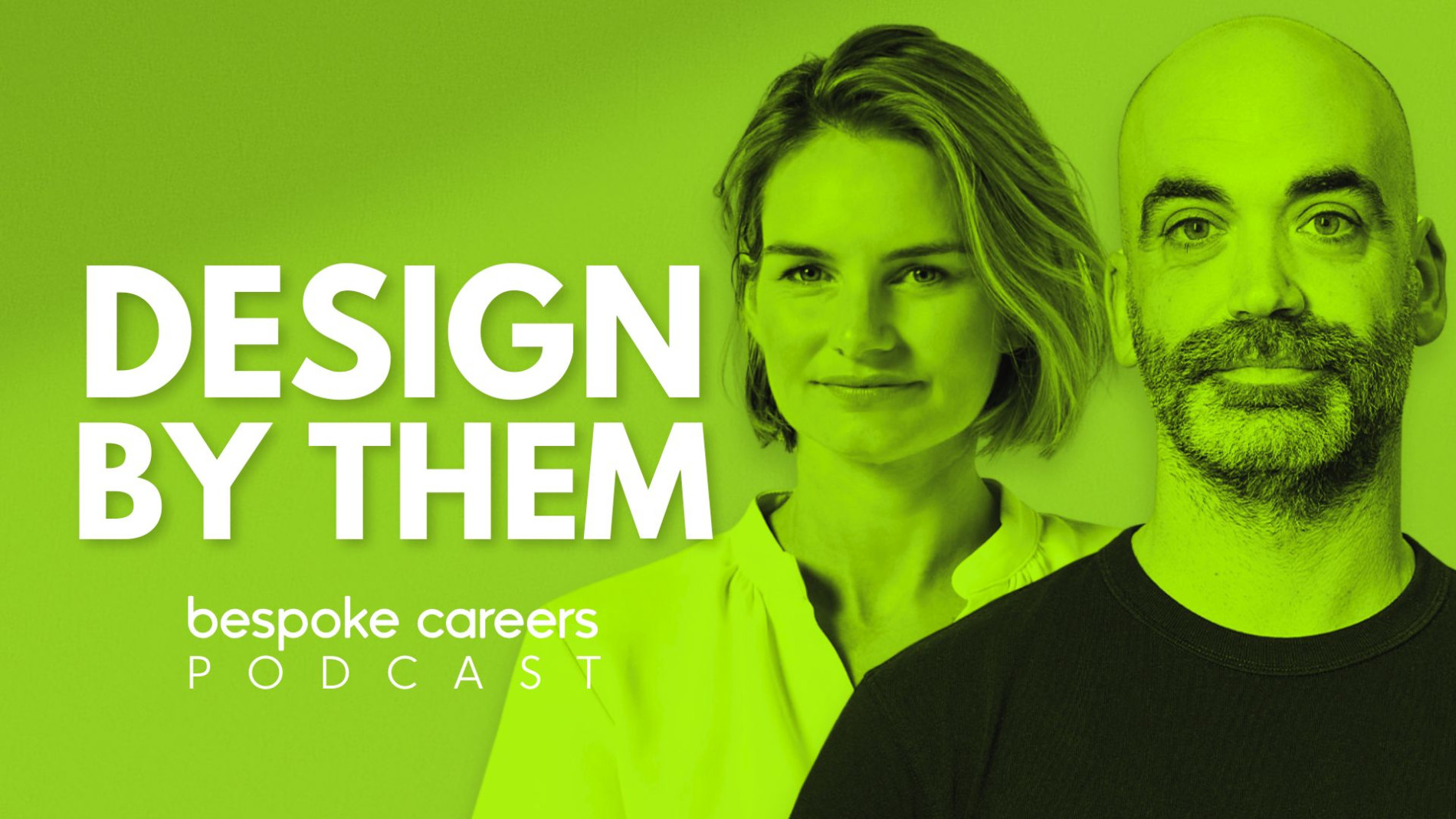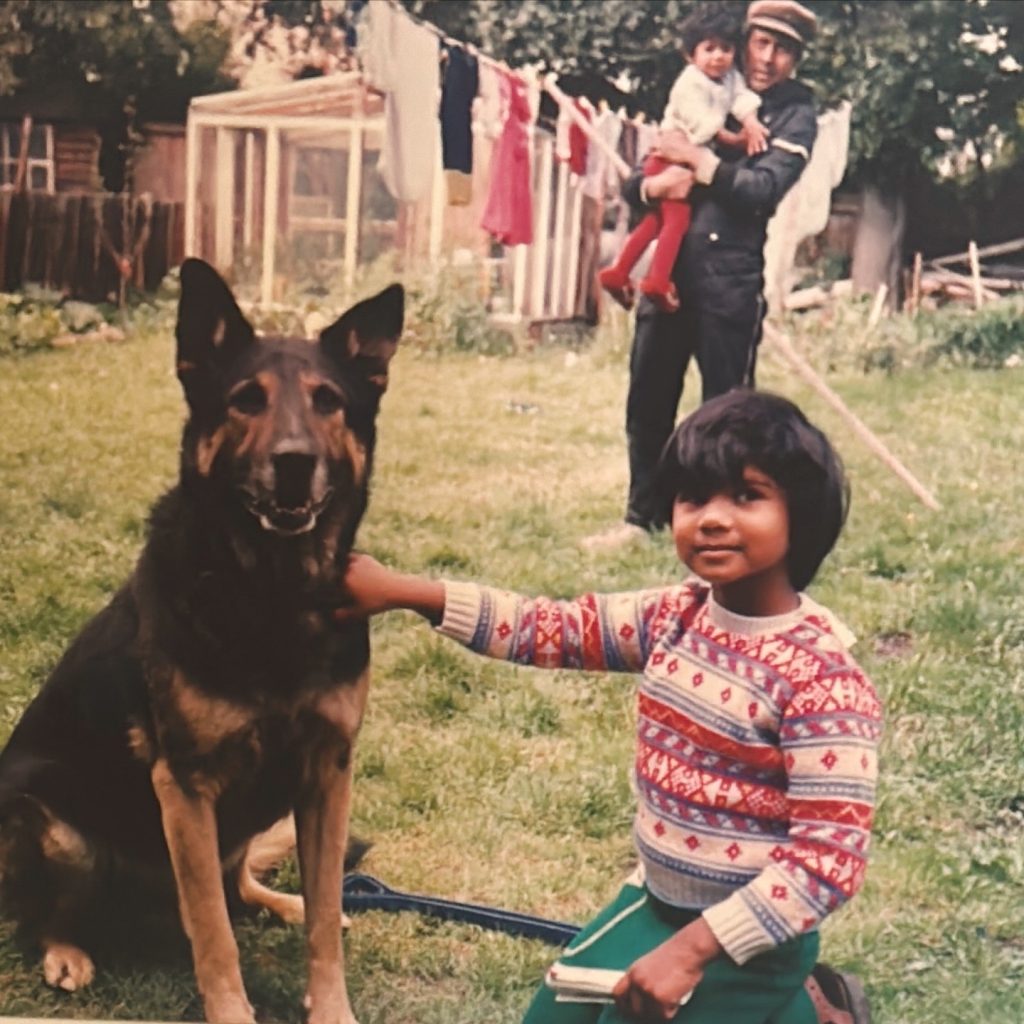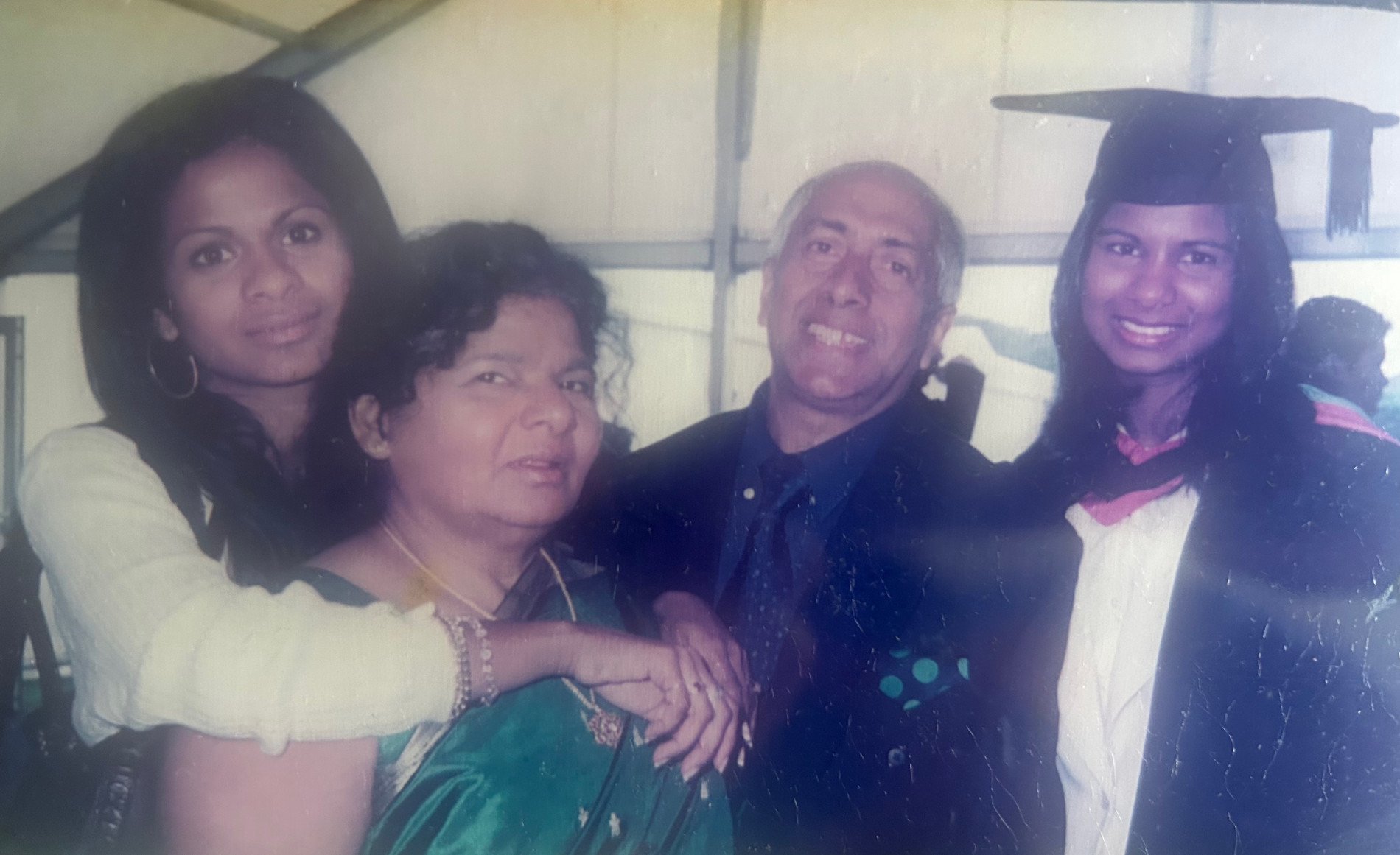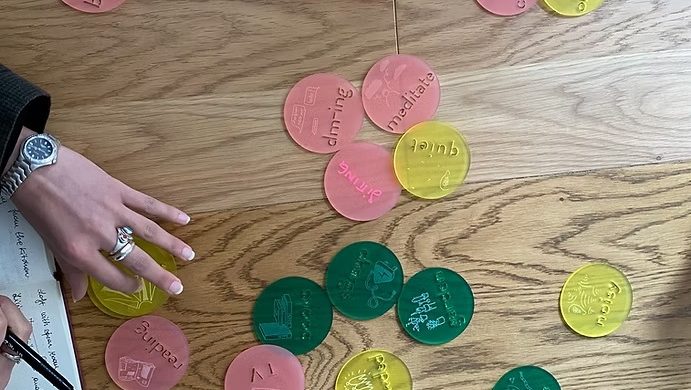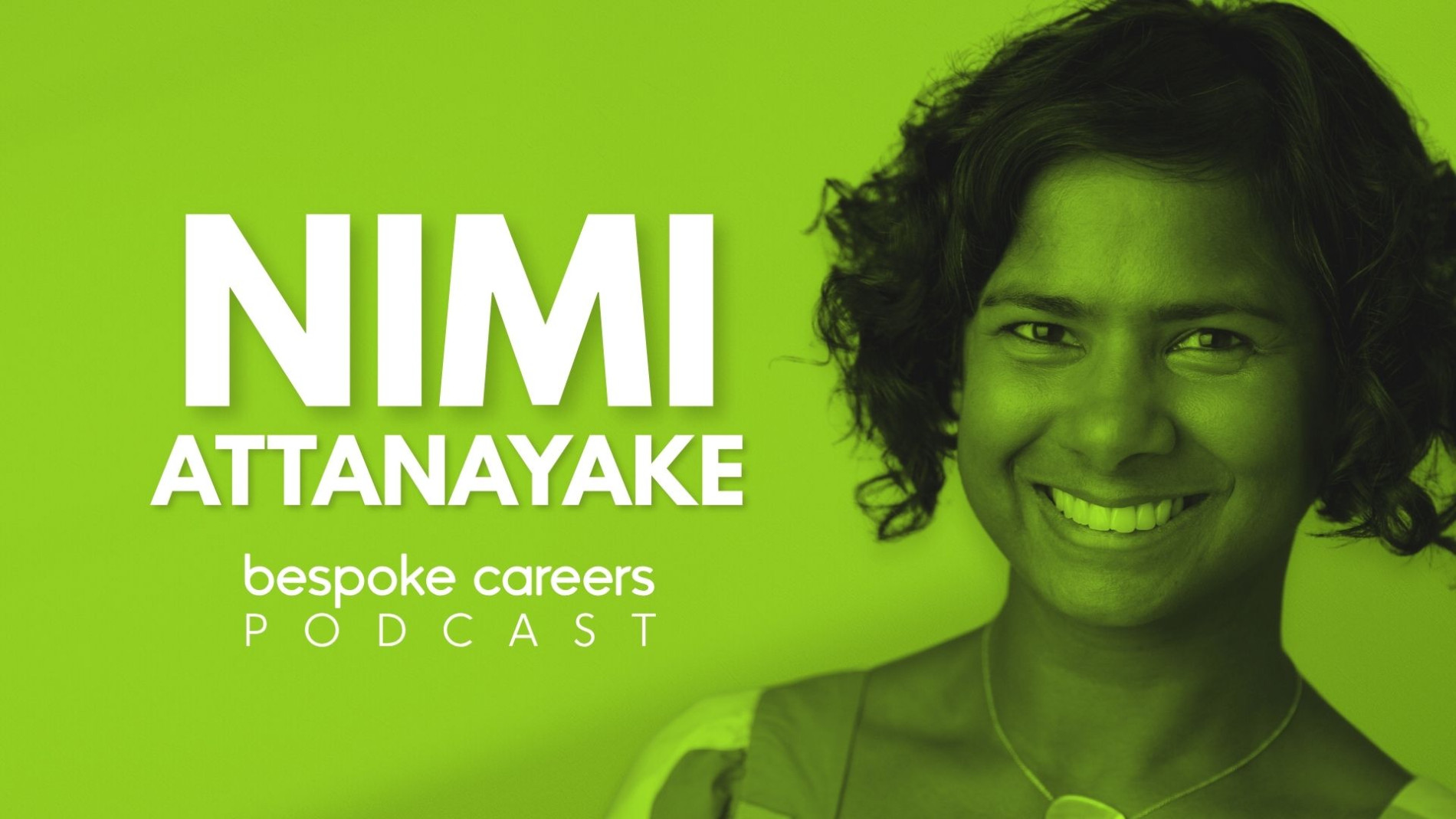
Nimi Attanayake on struggle, rethinking architecture, and finding joy in the everyday
We spoke to Nimi about how her personal and professional journeys inform her work and outlook. A must-read for anyone curious about architecture’s human side.
Nimi Attanayake is an architect and co-founder of Nimtim Architects. Nimtim’s work focuses on domestic projects, beautifully crafted and full of colour and novel materials, each deeply personal to the client.
Nimi’s involved in design review panels and seen as an advocate for diversity and inclusion, ensuring equal footing for female voices from all backgrounds.
Why architecture?
It never was architecture. I’ve battled with the profession and my place in it the whole way through my education. It’s only later, in the last 10 or 11 years since we set up Nimtim, that I’m really passionate about it. I love waking up every morning and doing what I do. I feel incredibly privileged and lucky that I get to decide what I do, or do work that brings value to me and hopefully others.
Architecture’s changed. Now, my day might look like coming to a podcast or presenting a scheme reimagining green spaces with the National Trust. I love talking about that. I like people and making architecture accessible for people. The othering nature of it, I don’t like, so I avoid those environments. That’s why I feel excited.
On early influences…
It was all around me. My family’s very extended, very close. We all lived in a big house while my parents saved. One uncle was a civil engineer, another a building surveyor. They’d do mad DIY projects. I’d get involved, even got a beam on my head once. But I was always interested.
At 14, I had an older cousin who chose architecture. In my Asian family, the choices were medicine or law. Doing something creative was foreign, but they supported a profession in the built environment. I liked art, was good at maths, but didn’t know what architecture was – they didn’t teach it at school.
On architecture school…
I started at Nottingham. It was pretty, away from London. But starting was a shock. Dropout rates were high because people didn’t know what it entailed. I finished and still didn’t know if it was for me. Work experience showed me most practices were run by older white men. I didn’t see myself in that profession, so I took a few years out. I realised I see everything through the lens of architecture – maybe because of my education, maybe just me.
Part 2 at Westminster was great – more forward-thinking, you could pursue your interests, almost self-direct your education. I really enjoyed that.
On early career and setting up Nimtim…
Coming out of a diploma and back into practice was hard – budgets, regulations, not creative fun. I worked in large practices. In 2009, I was made redundant in the recession, took time out to reflect, then started working on our own, and eventually set up Nimtim.
Before Nimtim, I was diagnosed with ovarian cancer, went through infertility – it really refocuses you on what’s important. We couldn’t do the rigid 9 to 6, or 9 to 8, with deadlines. What were we getting out of that? It was a risk – we didn’t know anything about business beyond what we’d learned in Part 3. We didn’t have a website or any of that. But we felt our way. We’re proud we built our website to be handmade, approachable, not glossy – equal in how we work with everyday people.
Many clients didn’t know what architecture was, so we explained the process. We really loved that, getting rid of jargon, making it everyday, approachable, relatable.
On the ‘briefing game’…
At first we had standard questions, but we realised clients aren’t all the same. You only get answers to what you ask. So we created something fun and playful, took out the stigma where people might not know the process or words. It’s been lovely – people trust us, and feel agency in the process.
We’ve used it in bigger projects too, like community engagement in forgotten green spaces. Especially when English isn’t always a first language or children don’t feel confident to speak up. It levels everyone up.
On Nimtim’s approach…
We have blank counters for clients to bring in their own culture or heritage. We steer the ship to follow RIBA stages, so we’re getting relevant info at each step, not going into too much detail too soon. We shape the environment for the process.
We agree on a narrative, a story everyone buys into – clients, contractors, everyone. It helps decisions. We’re lucky we’re small, working with small clients, so we can suggest exciting materials or textures that fit the concept.
Clients might not know about cork or hempcrete – but we can propose it and show how it works. They love it. One client sniffs the sea wall every time because it smells like charred timber. Or hempcrete – they love sitting in the space because it keeps a nice temperature and buffers sound. It’s a different quality they can enjoy.
On the connection between inside and outside…

‘Supper Time’ – A light touch, low impact addition to a home that creates a new focal point for the family. Photo by Jim Stephenson
It’s changed – people now care about how their homes can promote wellbeing. They’re more aware of climate, sustainability, chemicals. In Sri Lanka, you can’t separate the outside from the inside – it just flows in. Promoting natural ventilation, using healthy materials – that’s part of our responsibility.
After Grenfell, we decided to use more sustainable insulation, even though it makes walls thicker. Clients haven’t pushed back. They want it – it’s their life savings, and it matters.
On running Nimtim and the business side of things…
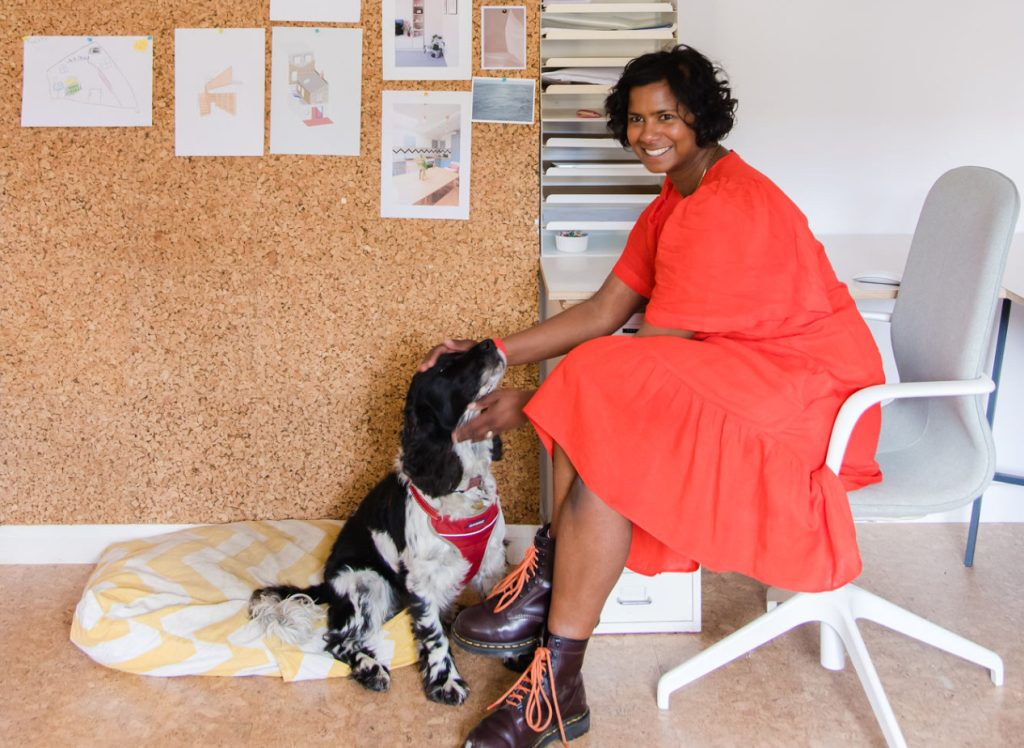
Photo By Megan Taylor
We try not to be guided by how other practices are doing things – we try and lead by example. We’re married, we have two adopted children – it’s a juggle. We allow flexible working, we allow working from home. We try and leave promptly. We have things like if people have to stay late, they’re given TOIL. We try and create a really nice environment where we want to come into work every day. We’ll have monthly soup and salad. We try and arrange lectures to go out and see together. We try and visit buildings where potentially there might be something interesting that we can take inspiration from or bring back into the practice.
We try not to lead the practice but encourage others to take part in it. So we try not to implement ways that are going to be rigid but let everybody shape those. For example, we invite them into the financial workings of the practice. We have regular updates, we have open salaries. We also had to recently redo our offices, which was really fun and crazy and stressful. We tried to use natural materials where possible, but also try and get everything used or secondhand so we weren’t having to buy things new – to try and reduce the carbon footprint of that project.
I think by nature of who we are, that’s how our work is kind of a reflection of who we are and our practice as well. We never intended to get more women in the practice, but it is a lovely thing. It’s really, really nice that there are loads more women and I think it’s a great thing every day to work with women.
On what’s next for Nimtim…
We’re really keen to continue with the threads we’re already working on. We love the domestic work – there’s something so personal about it. We’d like to do bigger residential projects, new builds with the same ethos and values as our smaller interventions.
For the landscape projects, we’re committed to working with communities to reimagine forgotten green spaces – places that don’t get enough attention but can have such a huge impact on people’s lives. COVID reminded us how important these shared spaces are, especially for people who don’t have much private outdoor space.
We’re also writing a book for the RIBA called Joyful Spaces. That’s been a really lovely process, talking to other practices about how they create architecture that’s meaningful and joyful for people.
On the idea of a Nimtim apartment building…
I think it would be playful, different, maybe not to everyone’s taste, but it would be right for the people who live there. It would feel personal.
On a Nimtim master plan…
I don’t think that can ever come from one practice alone. I think the most successful master plans involve lots of different voices and perspectives. That’s how you make sure it reflects the people who will live and work there.
On technology and AI in architecture…
We’re still figuring that out. I think it’s fair to say we’re not the best at the business side of things – that’s something AI could really help with. Automating the admin, helping us run the practice more efficiently – that’s where it’s useful.
But when it comes to design, to engaging with people – I don’t think you can automate that. It’s about people. It has to be about people.
On advice to new architects…
Celebrate what makes you different. Don’t feel like you have to fit into a mould. Practices need fresh perspectives, they need people who see the world differently.
Too often, architecture education pushes everyone to produce the same thing. But I want to see people who put themselves into their work – that’s what brings energy and new ideas to a practice.
On whether she could have imagined this career…
No, never. When I was diagnosed with cancer in 2013, everything fell apart. It was such a shock. Ten years later, to be doing work I love, to have a family, to have built something like Nimtim – it’s incredible. I feel so lucky.
It’s not easy. In architecture, there’s often this idea that you shouldn’t talk about personal struggles or things outside of work. But when you do, it builds connection.
I’ve had clients open up to me about their own health challenges after I shared mine. It changes how we work together – it becomes more human, more real.
It’s those moments when someone sees themselves in a space we’ve designed. When they feel like it reflects them, like they have ownership over it. That’s the best feeling – that’s what makes it all worthwhile.


Looking to hire top talent
 or advance your career? Let's talk.
or advance your career? Let's talk.
We connect exceptional firms with talented professionals.
Let’s discuss how we can help you achieve your goals. Get in touch with the team today.
Related Posts

With hiring challenges mounting, firms must rethink their strategies to secure the best talent in a competitive market, writes Jimmy Bent.
The new year presents a fresh round of exciting events for architects and designers, from New York to LA.
For architects and designers, networking is an essential tool for career growth. It’s one of the key avenues for expanding your professional circle, deepening your professional knowledge and opening doors to opportunities you never knew existed.
Read our tips for getting the most out of networking and a few upcoming architecture and design events you can add to your calendar.

